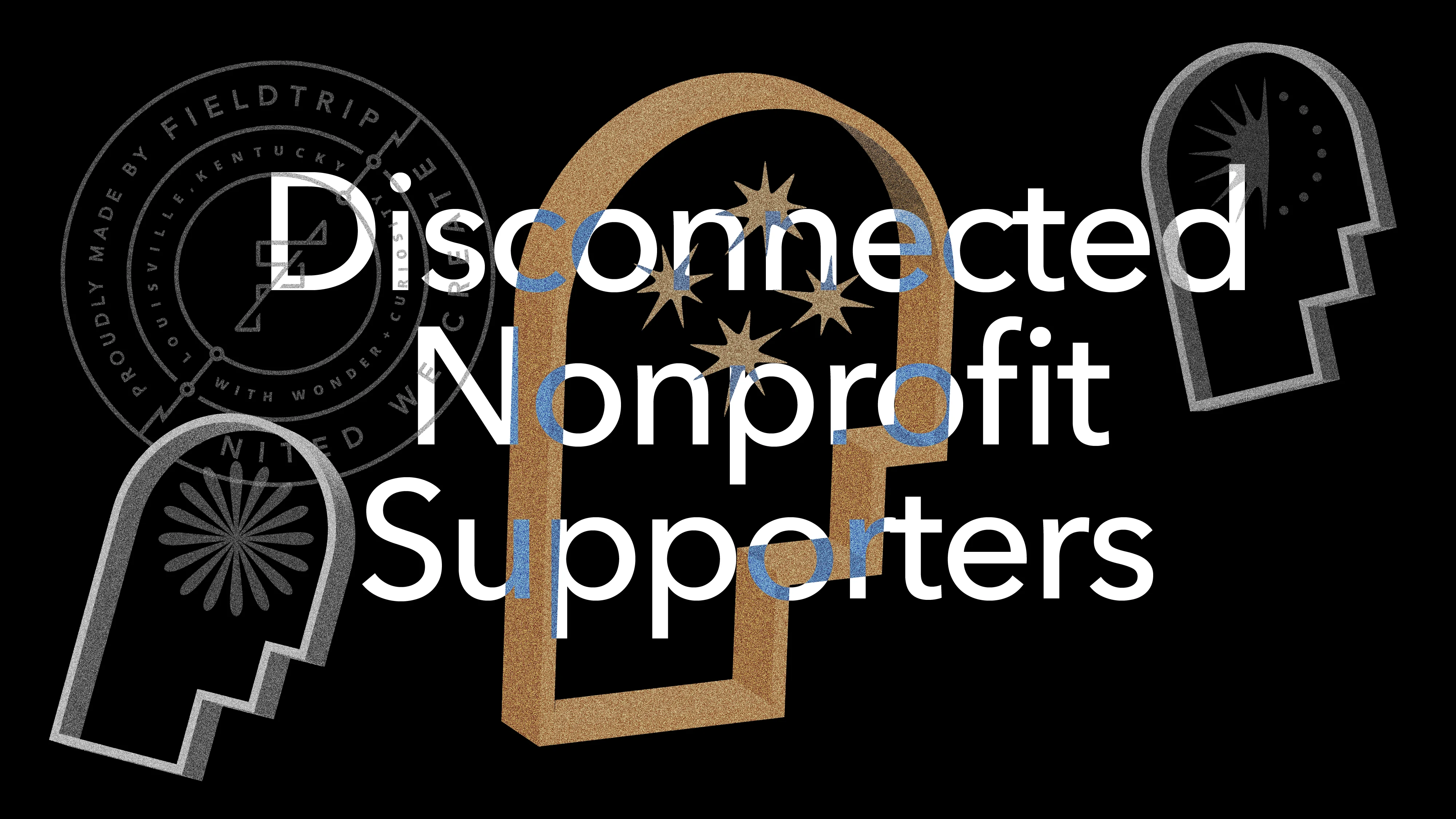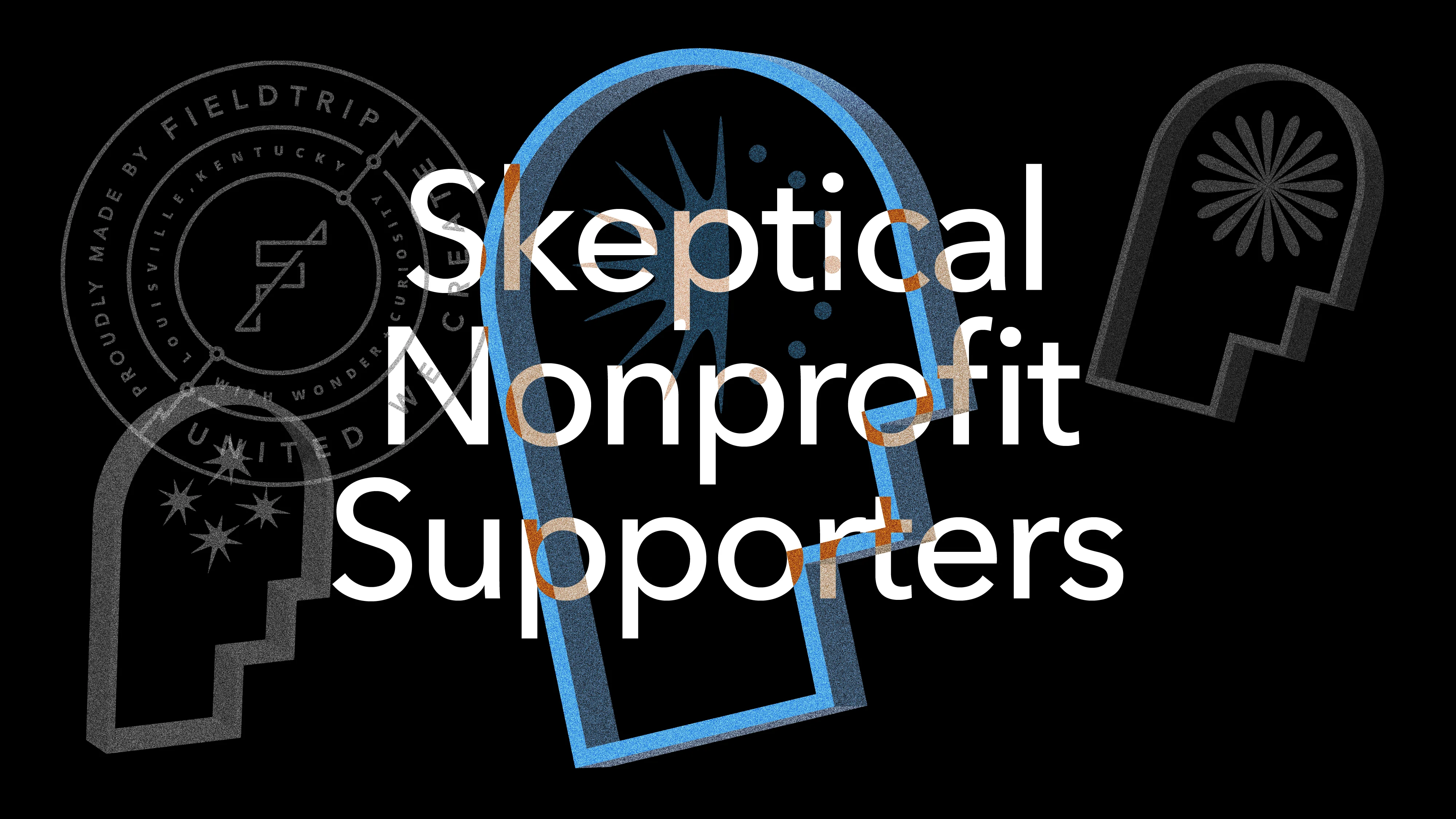Welcome to Mission Multiplier. I’m Jane Pfeiffer, founder and president of Fieldtrip. Fieldtrip is a marketing and branding firm that helps nonprofits and purpose driven organization to close the gaps–close the gaps between the people that they serve and support, and the people that they need support from. When you close that gap, you create what we call a mission multiplier. So for the past few weeks, I’ve been talking about marketing. First, defining what it is, and that includes branding, advertising, communications, and marketing. Talking about the role that it can have, whether it’s a zero, a want, a need, or the hero in your organization. And today, understanding the value by looking at what marketing isn’t to a nonprofit.
I like analogies, so today we’re going to use the analogy of crops. You’re the farmer. You’ve got a field to take care of. And that’s what we’re going to do and break through five things that marketing isn’t in your organization. So first, marketing is not development or fundraising. It seems obvious, but I’ve seen it on both sides of the spectrum where on the one hand, development staff is just waiting for marketing, communications and advertising to bring people to them and it’s a substitute for what should really be a development and fundraising effort. And then I’ve seen the opposite, where there’s no connection between marketing, and development and fundraising. It’s as if they’re in two silos, never the two shall meet. So we have to think about marketing as a fertilizer. A fertilizer for your crop? Yes. It’s not the crop, but it does help. Whatever you plant, produce and yield more. And that’s the relationship marketing has with fundraising and development not as a substitute, but as a fertilizer.
Second, marketing is not a one size fits all solution. Now, executive leaders have a lot to juggle, and so do their communication directors if they’re fortunate enough to have talent like that on hand. As leaders, we try and find efficiencies everywhere that we can. Sometimes that means taking a critical message and then just kind of pointing the megaphone to all the different people that we need to talk to. And that was efficient, right? We had one message. We sent it to everyone, maybe different channels like social media, the email newsletter, our website or a press release. But essentially we said the same thing to everyone. Well, let’s just say that instead of taking one message and sending it to everyone, you create efficiencies by finding the one audience that’s most important and then serving your messaging just to that person. For example, if you serve those with substance abuse disorder, make every comms, and PR, and marketing effort for them. For them. Your supporters, employees, and partners will see that you understand what those beneficiaries need and they’ll believe in what you do, and they’ll follow. So just like you wouldn’t plant one seed in every soil type, you have to match the seed to the soil. Now, that’s exhausting when you have lots of different crops and different locales and different weather patterns and different geography. But chances are you don’t. You have a primary plot and therefore a primary seed, and that’s where you need to look for the optimal match. Focus on your primary audience, the people that you serve, and serve your marketing and communications to them, knowing everyone else is likely to follow.
Number three, marketing is not a one-time event using special funding to build a asset like a new brand or a website or a really nice collateral piece or communications asset. These things are good and it will lift the organization. But what really needs to happen is an investment and then a continual nurturing of that investment. Even if it’s a website, you can’t just build it once and then let it coast until it’s outdated. You need to continue to invest in it so that it gives an incremental lift to everything that’s happening within your organization. And you’re now at a new plateau and can continue to fight for incremental growth after that. So again, coming back to crops, you cannot commit to a relationship and then just walk away. You would have wasted your money and seed and effort. You have to nurture it at every opportunity.
Number four, marketing is not the small stuff. It’s not a logo. It’s not a social media post. It’s not a billboard. It’s not a press release. It’s the big thinking. This is where strategy lives. This is where your goals for your entire organization live. And it’s a bold vision. Marketing should inform your organizational structure, not vice versa. Let me repeat that. Typically in nonprofits, we see a strategic plan of which marketing might be one leg of execution. Marketing should contribute in advance to that strategic plan and organizational workflow in every part because marketing brings the audiences that we serve to the table, and usually they’re not at that table.
So we have to look at that first. It’s easy to think that marketing is kind of the label on the produce bag or the tent that you would set up at a farmer’s market, or see at a farmer’s market. That might be the start of what you need to do. But if that’s where you start, you’re really too late because marketing is doing the survey of what do consumers really want? What are the competitors doing? What’s the market like? What are the conditions? Doing all that research first and foremost, and then deciding what to plant. Hoping you can see this correlation that marketing again, should be a leading investment, not a downstream operational expense.
And that leads me to my fifth and final point which is that marketing is not an operational expense. I know you’ve heard it. Investing in marketing raises overhead and takes away from the money that we have for our mission, and that’s the most damaging misperception of them all. But we hear it a lot from the public, from our board of directors and from other sources. We have to change that nonprofit model and the mindset that goes along with it. Marketing is an investment and it should be a proactive one. Returning, again to farming, marketing is knowing the market, researching the soil, the seasonality and understanding what your consumer wants before you develop the products and services that you have in mind. If you plant in the wrong soil at the wrong time with the wrong crop, with something that isn’t in demand, you’ve just invested in a costly failed experiment.
So marketing adds value at every step of your organization’s journey, and it isn’t something that you should do just simply when you have leftover cash, which we know is a rare opportunity. So thanks for listening. And again, as leaders, we are born to make things happen and drive forward. I’m just suggesting that it can be a lot easier when we look at things from a different perspective. In this case, that’s the relationship between your organization and how marketing can be my favorite four letter word and that’s “hero.” Thanks for watching, visit wearefieldtrip.com/nonprofits to find more Mission Multiplier videos.



